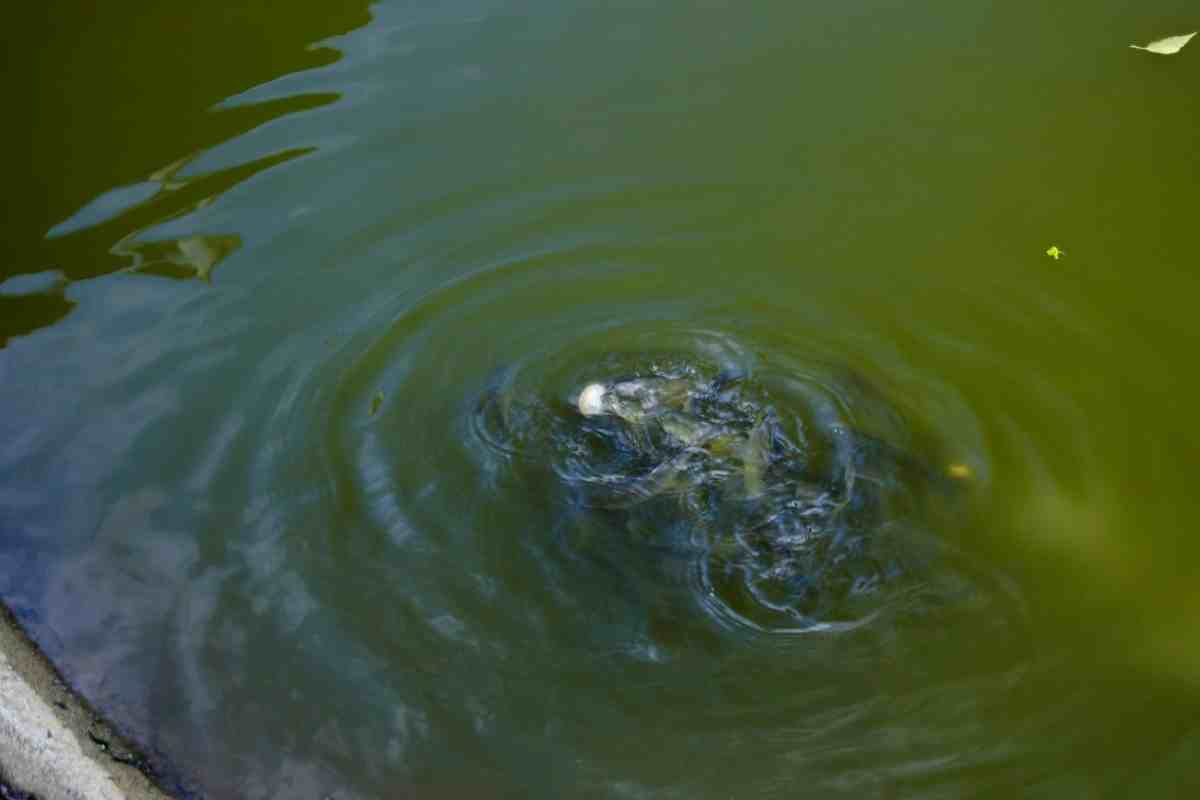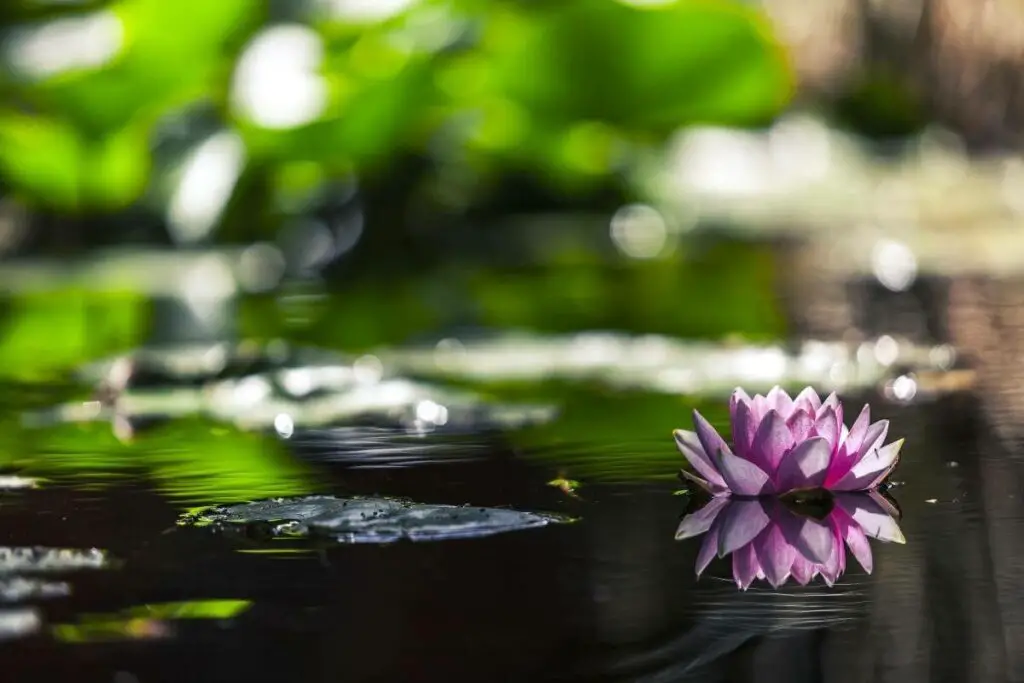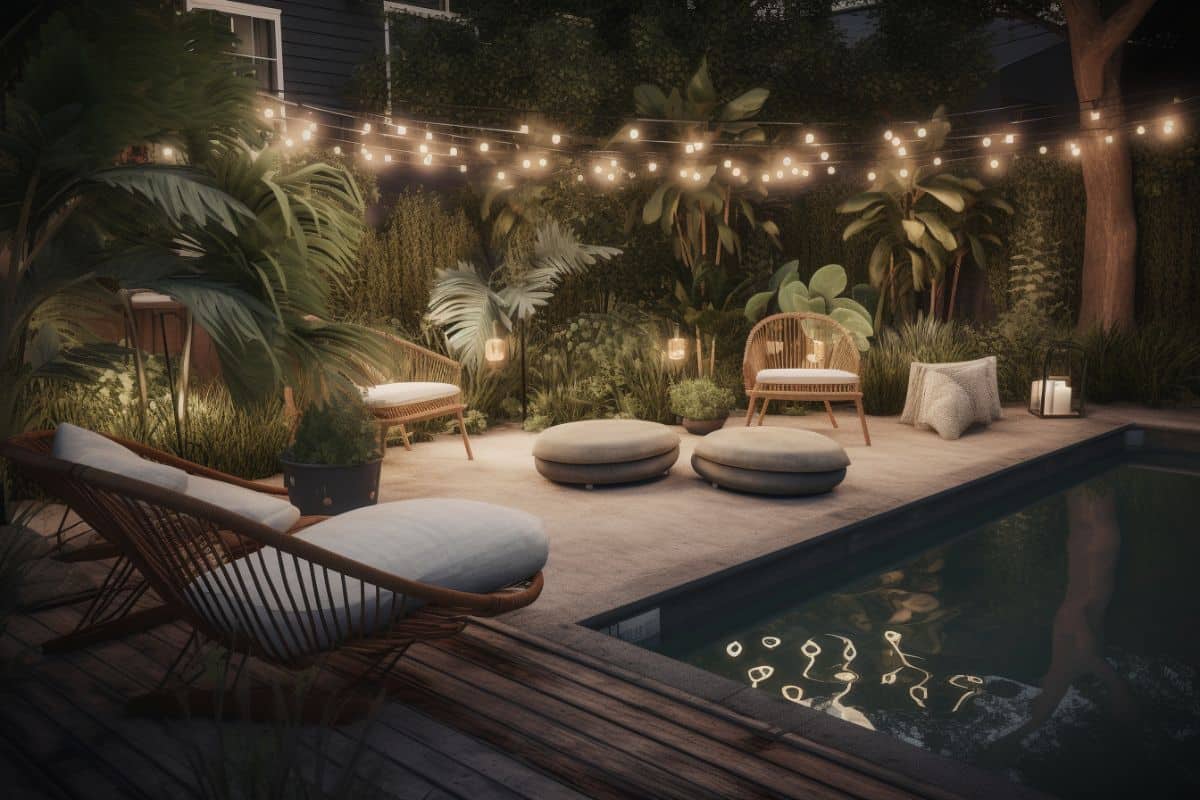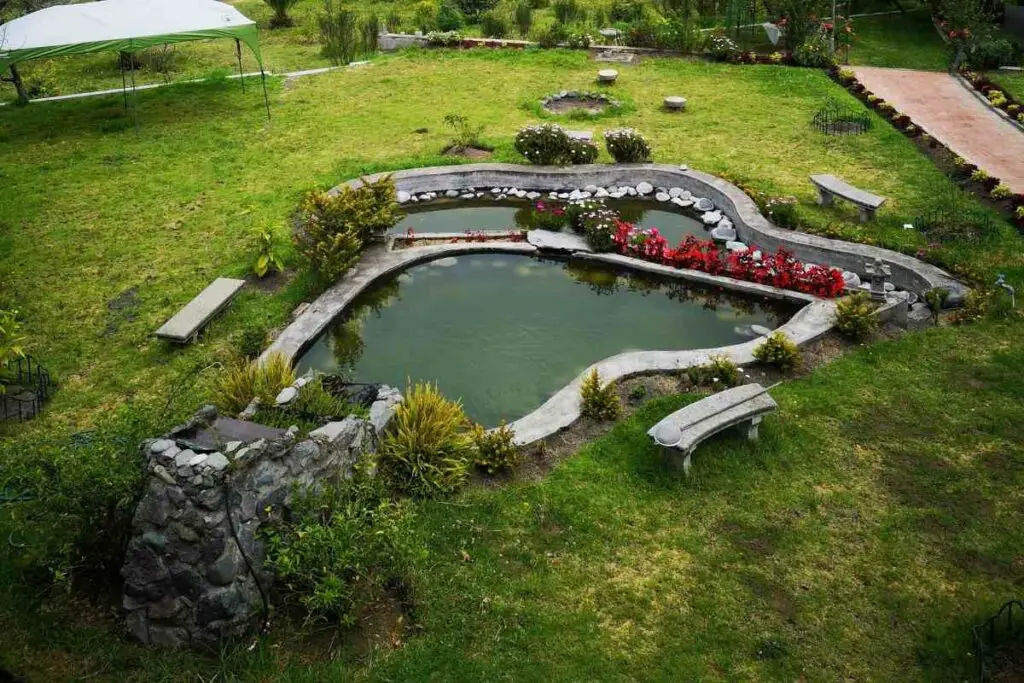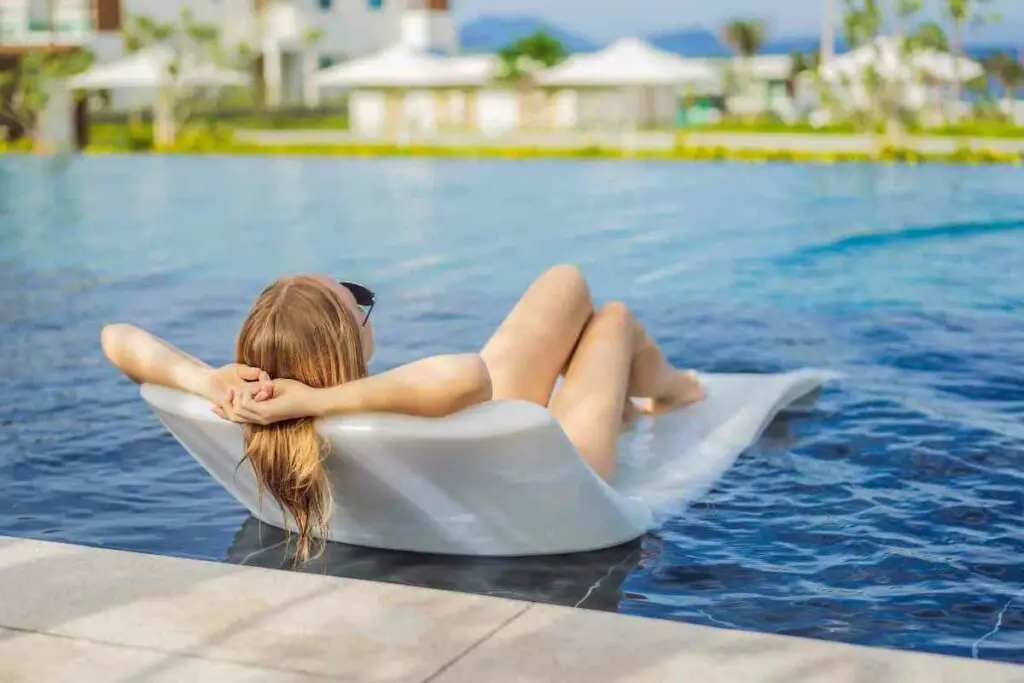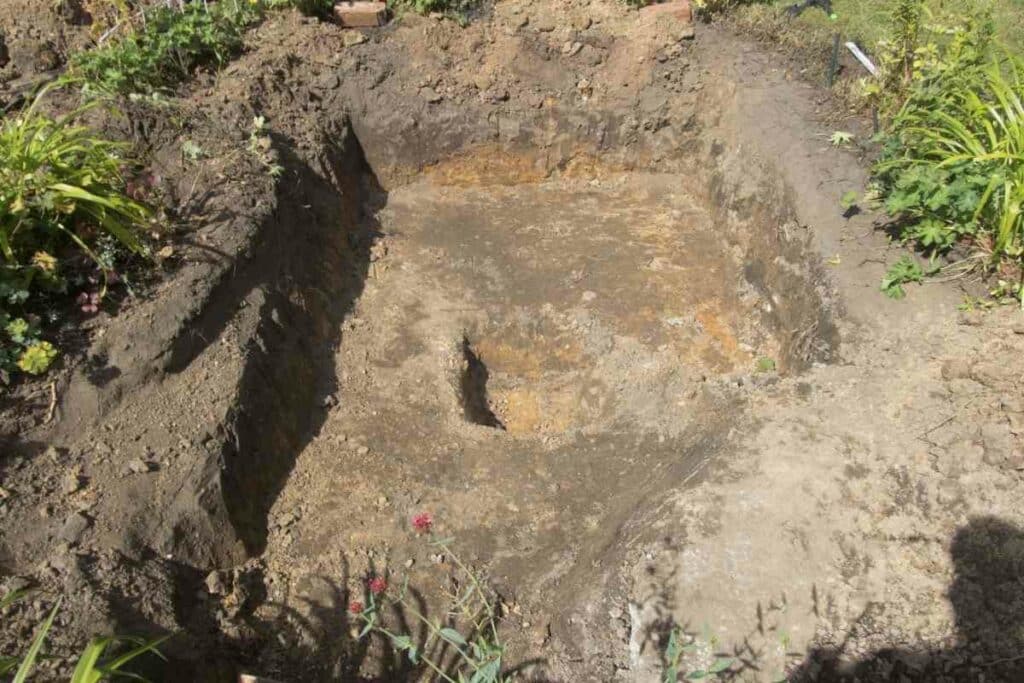As with every other animal, captive fish also need to be fed to grow fast and healthy.
Fish in the wild take in naturally occurring food such as worms, insects, and weeds like algae.
Fish will still ingest the bread crumbs when fed as they cannot tell the difference between the small pieces of bread and other small-sized fish treats. However, you should not feed bread crumbs to your fish since this is so unhealthy and could result in their death.
The bread soaks in a lot of water, and since fish lives in the water, this means the bread crumbs will swell as long as the fish is in water, causing bloating in the fish’s stomach.
What Happens When You Feed Fish Bread Crumbs?

How Do The Bread Crumbs Affect Their Habitat?
If the fish pond is small, the small pieces of bread could affect the fish’s water.
When you dip bread in a glass of water, most pieces float on the water surface and eventually soak up and settle down at the bottom, similarly occurring in a small-scale fish pond.
The fish will feed on some of the bread crumbs, while others will settle down at the bottom level of the fish pond.
The bread crumbs will decay and become a source of ammonia due to fermentation from the yeast.
During decay, the crumps release chemicals, and unwanted bacteria, toxifying the water and eventually killing the fish.
The small bread crevices can also block the water filters contaminating the water.
How Do The Bread Crumbs Affect the Fish?
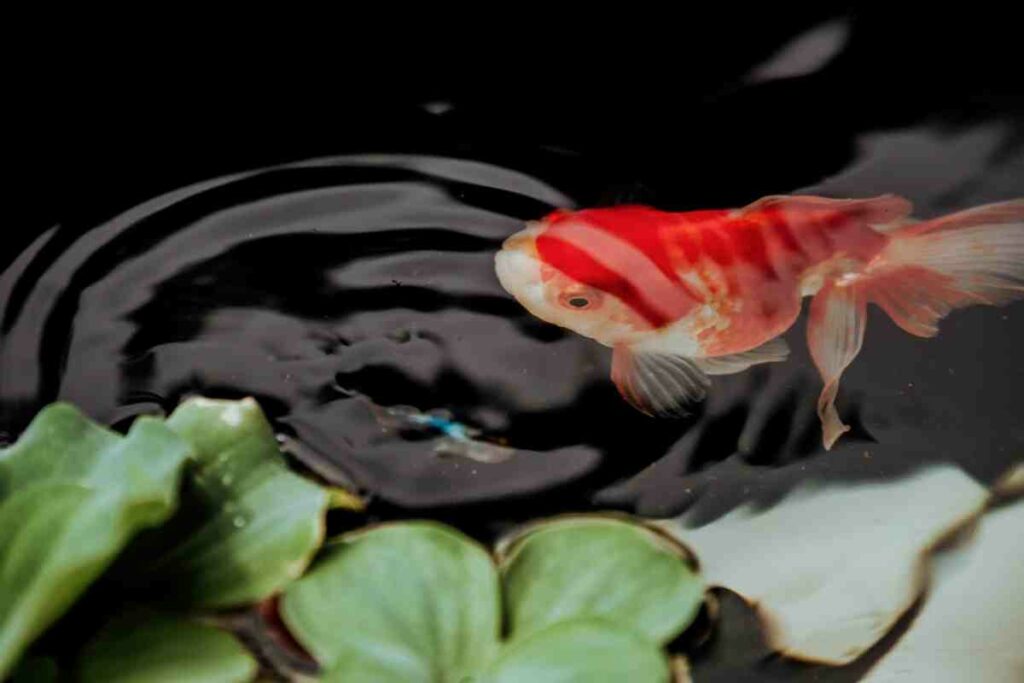
Bread Is Not Digestible
Bread is not digested when consumed by fish since it contains gluten that causes constipation, making the fish feel ill and sluggish. Most bread contains yeast ingredients that swell the stomach and kill the fish.
Also, bread has additives such as salt, sugar, flavors, and colors, which are not healthy for the fish:
- Bloating makes the fish feel less energy, causing laziness to swim or eat and eventually starve themselves.
- Additionally, bread pieces can block the digestive system since they won’t be digested.
When the system is blocked, the waste will not get released and will sit in the stomach for days, increasing the level of toxicity until the fish dies.
Bread crumbs also lower fish metabolism, negatively affecting digestion.
As a Result: When the fish are swollen, gassed, and constipated, the fish won’t swim around or eat. Low metabolism makes the fish inactive and does not take in the nutrients that keep them alive.
Can Lead to Pond Turnover
Building the fish pond ecosystem is not easy as it requires a lot of maintenance and works to keep it balanced.
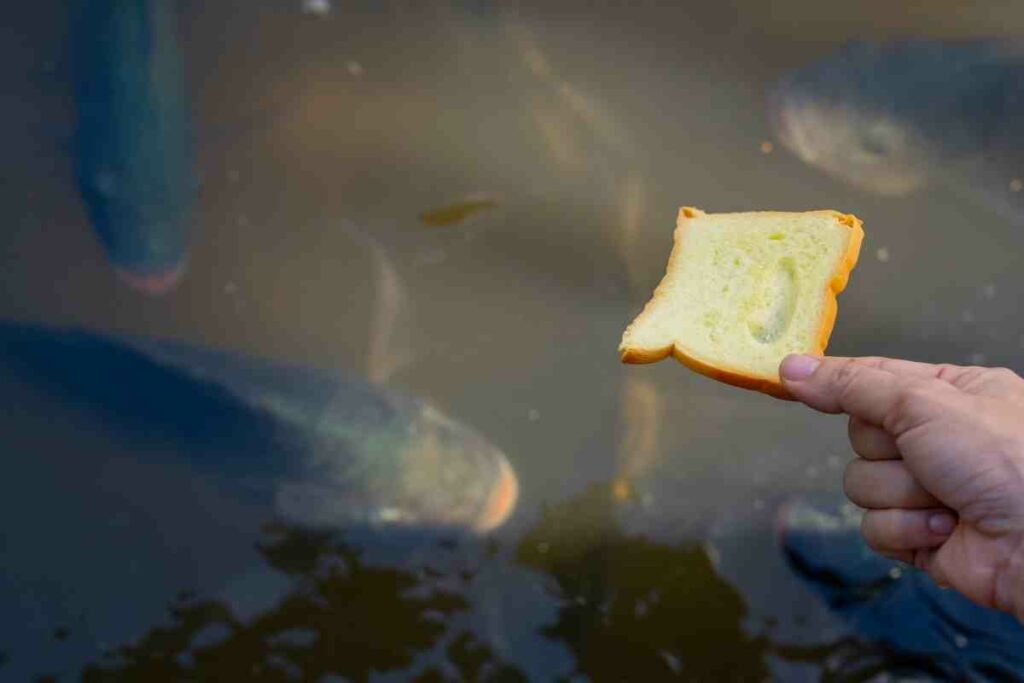
Most fish ponds are cleared using a skimmer or net to filter out the organic debris.
When the bread crumbs decay at the bottom of the fish pond, it releases a ton of nutrients to the water, which feeds the algae in the pond, causing them to yield, coloring the water with a blue, green disgusting murky appearance.
Despite causing the lousy look, organic decay also results in a pond turnover.
Pond turnover occurs when stagnant water mixes, mainly driven by season or wind currents.
Material waste released doesn’t dilute evenly but instead settles at the bottom level of the pond.
This reduces the healthy living of the fish as the bottom is laid down with waste gases and toxic materials.
Change of seasons worsens the situation as the top layer of the water gets cold, sinks, and disturbs the waste below, mixing it with the pure water above.
What Are The Other Harmful Results Of Feeding Fish With Bread Crumbs?
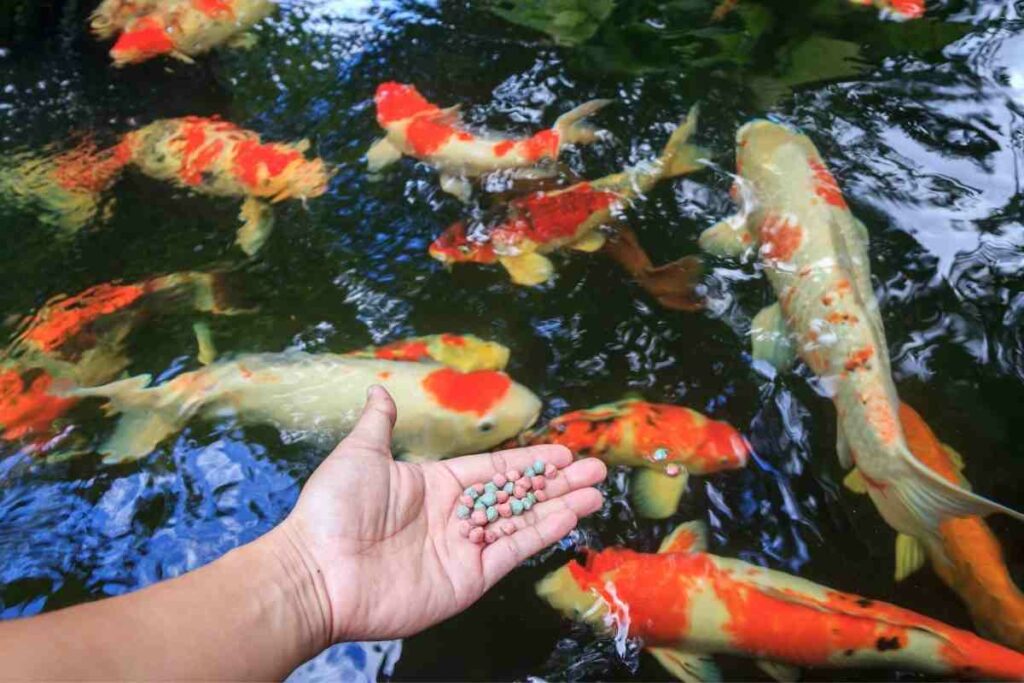
When the bread crumbs decay, they deplete the oxygen levels required by other living animals in the pond, the fish, and the plants.
Organic matter beneath brings the growth of mold, which is a white fuzz around the pond.
Organic matter could also attract worms such as flatworms.
Flatworms affect the increase of fish numbers in the pond since they feed on the fish eggs.
What Are The Best Home Food Alternatives To Feed Fish In A Pond?
If it is not looking to feed fish with bread, one might ask what the best food types to feed fish are.
When feeding fish, it is best to check on food quality:
- High-quality foods with high protein content are preferred best for fast growth. Quality food contains a high nutrient content as opposed to bread which has more than 90% carbs.
- Low-quality foods are not easily digested, adding unneeded nutrients to the water.
Energy-filled foods are also good fish foods.
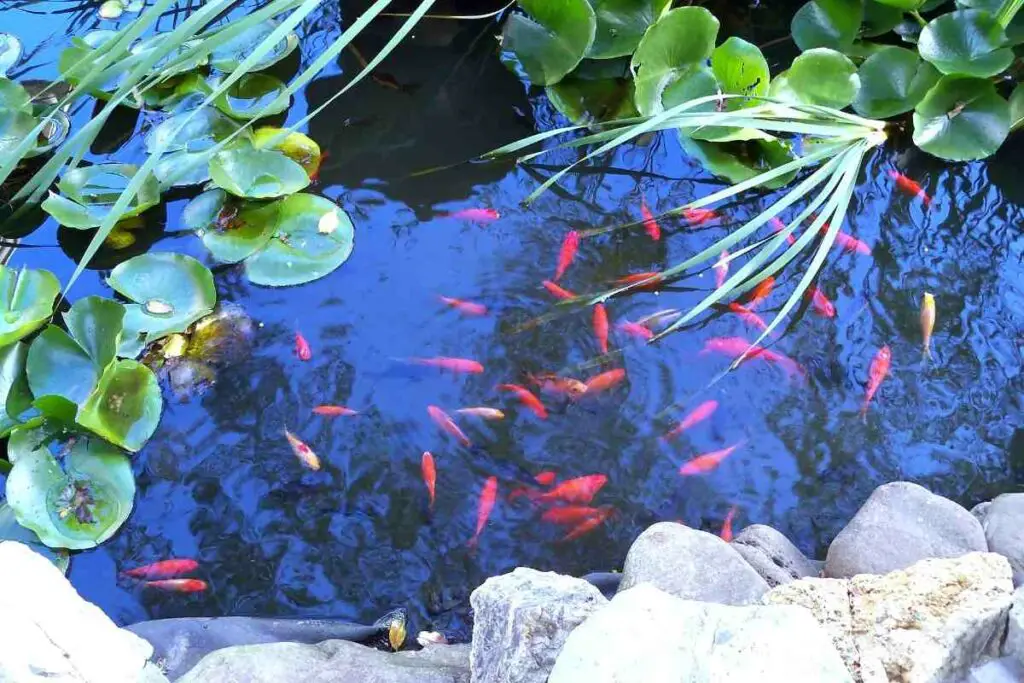
Insects, small fish, and parasites are live foods to feed your fish.
You can relieve constipation from the fish by providing it with foods rich in fiber, for example, leafy greens.
Try This: Boiled or peeled peas are also good to get rid of constipation and also contain a ton of nutrients that are beneficial to the fish. However, it would be best not to feed them regularly, resulting in digestive problems.
Other Foods You Should Not Feed Fish In A Pond
Avoid foods high in carbs as they cause:
- bloating
- swelling
- low metabolism
- and pain
Fruits contain sugar and carbs, are also not suitable for fish, and lack nutrients to keep the fish healthy and alive.
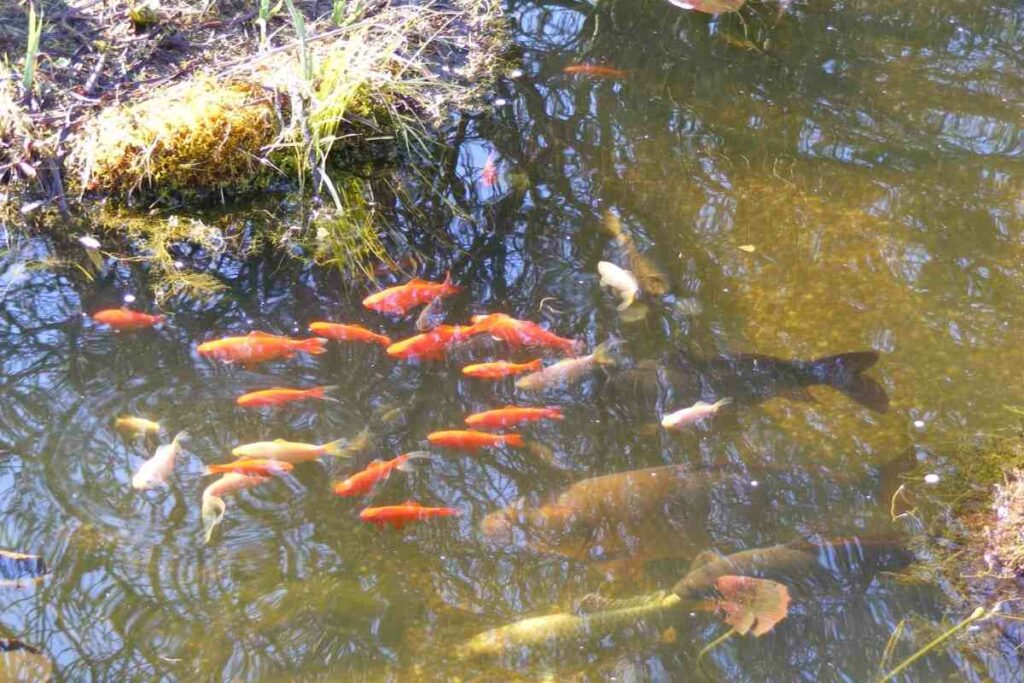
Additionally, avoid fatty meats, for example:
- poultry
- pork
- and beef
Fish require little fats for insulation and more protein for fast growth.
More fat in a fish diet can also cause obesity, making the fish lazy and tired. It can also result in a liver problem.
Final Thoughts
Fish can’t digest gluten and yeast, which are bread’s main ingredients.
It is not advised to feed fish bread crumbs in any given circumstances as it will cause bloating, swelling, and constipation, which all have adverse effects on a fish’s health.
Bread crumbs not only affect the fish but also affect their habitat.
Bread pieces that are not consumed settle at the bottom level and slowly decay, depleting oxygen levels, acting as a source of nutrients for the algae.
They also lower the pH level of the water due to an increase in acidity which will poison the water resulting in fish deaths.
You Might Also Read
- What Should I Put in the Bottom of My Wildlife Pond?
- Backyard Oasis With Pool: Creating a Relaxing Retreat in Your Backyard
- How to Find Pond Leak (Quick Method to Find the Leaks)
- Pool Ledge Lounger – Complete Buyers Guide
- Do Garden Ponds Overflow When It Rains
- How To Fill A Pond With Water (Complete Guide)
